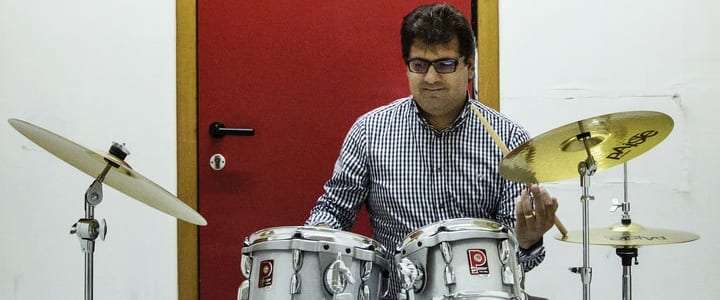Have you ever watched a cool drum cover video on YouTube and thought to yourself, “I wish I could do that?” Well, guess what…you can! Here, drum instructor Maegan W. shares six simple steps to help you create your own drum covers…
It seems like drummers are taking center stage these days with the help of one major tool, the drum cover. Drum covers can be considered the ultimate outlet for artistic expression. Not only can you share your unique drumming style, but you can also create a visual masterpiece to match.
So how does one make a drum cover? In this crash course, you’ll learn drum cover basics, along with the essential steps to build your fan base, get discovered, and be the star of your own show.
1. Equipment
The first thing you need to create a drum cover is a recording device. This can be a smartphone, a GoPro, a camera, or your computer, if it has recording capabilities. Of course, if you have access to high-quality video equipment, feel free to use that. If you don’t, no problem, just focus on putting 100 percent into your drum cover.
Next comes sound. If you have an external microphone, make sure you know how to use it. Read the manual – every little tip and trick makes a huge difference in sound quality.
2. Song Choice
Song selection is crucial. Depending on your goals for your drum cover, you may want to do some research. If you want to get noticed, then it’s important to pick the songs that people want to hear.
This may seem obvious, but so many drummers want to stay underground, or think they’re too cool to cover popular songs. There’s nothing wrong with this mentality, but if you want to bring people to your channel, you need to play popular songs. This doesn’t mean you should cover songs you don’t like, but covering pop songs can help you gain exposure online.
3. Know the Song
Before you record, make sure you know the song inside and out. I like to get to a point where I can play the entire song without listening to the song. You can avoid a lot of editing and post-production work if you know the song really well.
Post production is the most time-consuming part of the process, and it usually causes people to give up on a project. I like to chart a song before I come up with creative parts to play. Once I know the format, I move on and learn the beats and fills, then I add my own twist. Not knowing the song is also a waste of time and energy because you have to keep stopping and starting over.
4. Test
Once you have the song down, it’s time for a sound and video check – don’t skip this step! There’s nothing worse than playing your drum cover perfectly with all the fills exactly how you want them, only to realize the lighting was bad, your head was out of the frame, or the sound is off.
Trust me, take the time to test.
5. Stand Out
Once you’re ready to go, try to think of something that will make you and your video stand out. It doesn’t have to be crazy, but little signature moves, sounds, styles, and filters can help you create a memorable, crowd-pleasing drum cover.
You get to decide what you want to be known for. Do you want to be the drummer with great hair and crazy gospel chops (Luke Holland), the drummer who does a backflip off his chair (Dylan Taylor), or the guy with the awesome accents and mash-ups (Cobus)?
Decide what makes you stand out. But don’t just imitate other drummers – highlight your unique gifts and come up with your own thing.
6. YouTube Channel
If you don’t have a YouTube channel, don’t worry – it’s super simple to create one. Just get yourself a Google e-mail address, go to YouTube, and create an account.
Once you’ve recorded and edited your drum cover, you’re ready to upload it to YouTube. Use careful, strategic keywords in your description. These will help you get fans, views, and likes. Include the song title, artist name, “no copyright infringement” statement (very important; you can research what other drummers list in their descriptions), and your social media pages and website links in the video description.
A lot of people like to list their drum gear or song lyrics in the description. This way, if people search for specific brands or lyrics, your video may pop up in the search results.
Once your video is uploaded, send it to everyone you know and post it to your social media sites. With so many digital tools, everyone has the opportunity to become a star, but remember, it takes hard work and patience.
Now that you know the steps, it’s time to get started. Remember this very important fact: done is better than perfect. It doesn’t have to be perfect (it will never be), just do your best during practice and give it your all! With that being said, make sure you’re proud of the videos you post.
I hope this helps. Good luck and let me know how it goes!
 Post Author: Maegan W.
Post Author: Maegan W.Maegan W. teaches drums, songwriting, and more in San Diego, CA. She earned a degree in Percussion from the Musician’s Institute, and has been teaching private lessons since 2004. Learn more about Maegan here!
Photo by Bold Content
The post 6 Easy Steps to Create Your Own Drum Cover appeared first on | TakeLessons.

